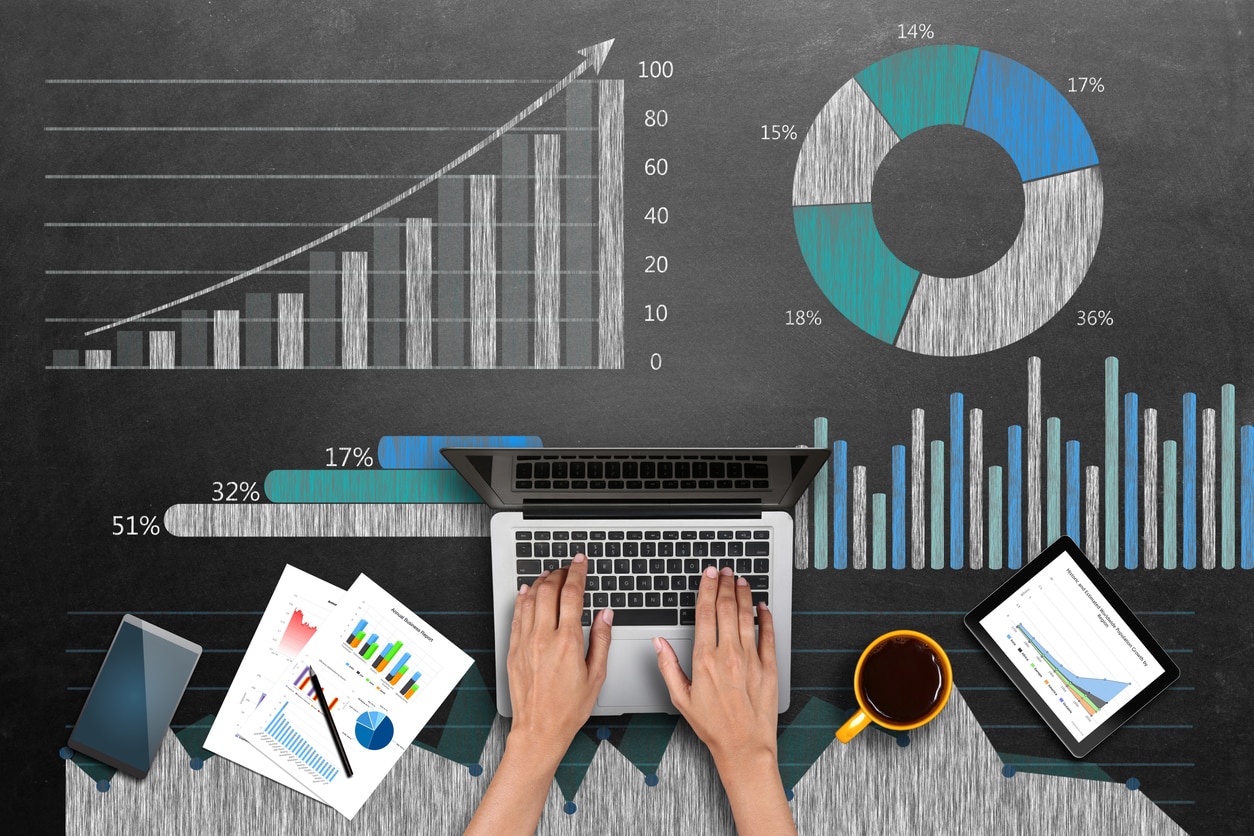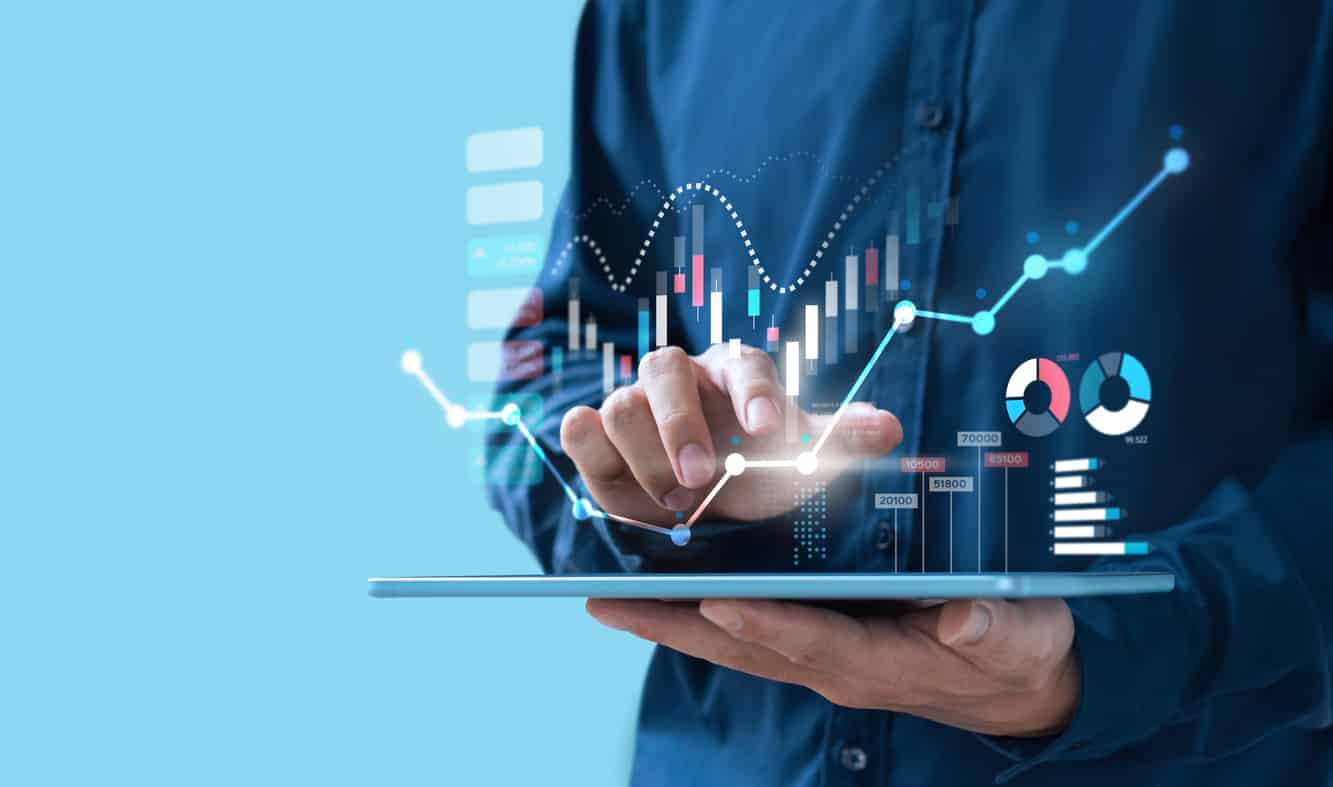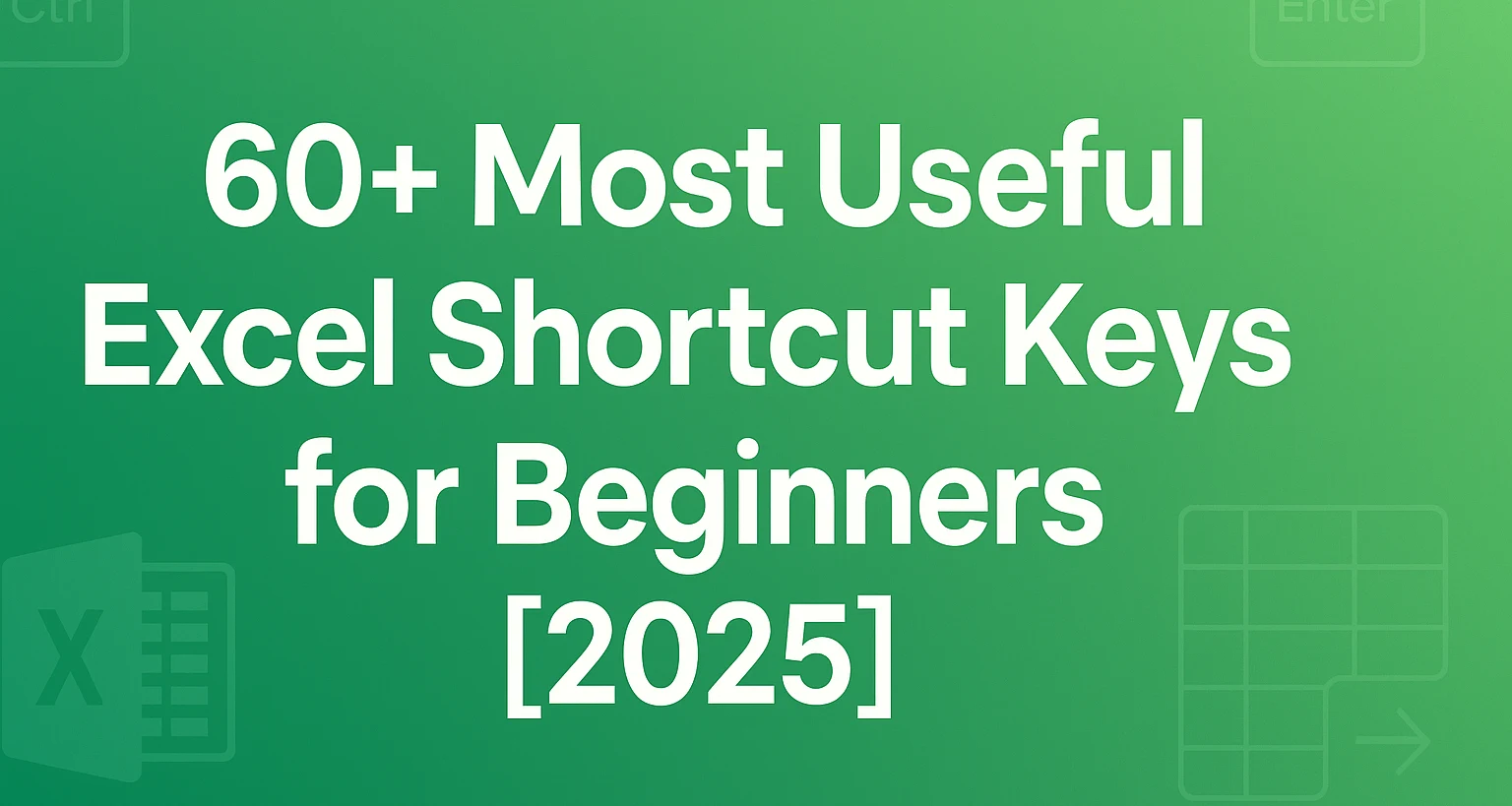What is Business Analytics?
From manual effort to machines, there has been no looking back for humans. In came the digital age and out went the last iota of doubt anyone had regarding the future of mankind. Business Analytics, Machine Learning, AI, Deep Learning, Robotics, and Cloud have revolutionized the way we look, absorb, and process information. While there are still ongoing developments happening in several of these advanced fields, business analytics has gained the status of being all-pervasive across functions and domains. There is no aspect of our lives untouched by Analytics. The mammoth wings of analytics are determining how we buy our toothpaste to how we choose dating partners to how we lead our lives. Read on to know what is Business Analytics.
Moving on to a more technical definition of business analytics, Gartner says, “Business analytics is comprised of solutions used to build analysis models and simulations to create scenarios, understand realities and predict future states. Business analytics includes data mining, predictive analytics, applied analytics and statistics, and is delivered as an application suitable for a business user. These analytics solutions often come with prebuilt industry content that is targeted at an industry business process (for example, claims, underwriting or a specific regulatory requirement).”
Business Analytics is interchangeably used with data analytics. The only difference being that while data analytics is the birth child of the data boom, business analytics represents a coming of age that centers data insights at the heart of business transactions. Nearly 90% of all small, mid-size, and large organizations have set up analytical capabilities over the last 5 years in an effort to stay relevant in the market and draw value out of the insights that large volumes of data recorded in the digital age can provide. Now that you know the definition of business analytics, let us take a look at a more comprehensive understanding of the business analytics process.
Professionals, on the other hand, are also in a rush to bag analytical roles for career success. So, what does it mean for aspiring analytics professionals?
Nearly every domain has seen an up-rise in the number of opportunities in the analytics segment but there is still a huge supply-demand gap that exists when filling these positions. This is because of the lack of relevant quality education in graduation (that still continues to teach its archaic curriculum) and also a lack of enthusiasm to upskill especially in the more seasoned professionals with more than 5 years of experience. Slowly, this trend is changing with freshers taking up business analytics and data science courses before entering the workforce and the seasoned professionals taking cognizance of the fact that they may render themselves jobless without upskilling to the skillset required in the digital economy. To make a switch:
- Find opportunities within your own firm to move – Every mid to large organization is establishing its analytical capabilities and there are ample opportunities out there for people to switch. If you have experience with reporting or analysis or statistics or advanced excel, chances are that your leaders will be open to you moving on to a more complex role. In the beginning, you may have to juggle between your regular work and new analytical initiatives, but this is one of the easiest ways to get started.
- Take up an Analytics Course – Learning things scientifically in a structured format helps you scale faster. Several options are available when it comes to Analytics courses right from MOOCs, weekend programs, hybrid courses (classroom + online) to full-time programs. While traditional full-time programs tend to promise the best results, hybrid courses and MOOCs are more suited to the learning needs of working professionals.
- Get Hands-On Experience – A certificate or merely stating on your CV that you know analytics tools and techniques will not help you get through job interviews. What you need are ready projects on your resume to make an impression. Participating in online hackathons, free projects with public data, or solving analytics challenges by Kaggle or Analytics Vidhya will go a long way in giving you the confidence to make this switch.
Comment on the blog below if you need further help figuring out these steps and we will be sure to help you.
Do you know what the main components of a Business Analytics dashboard are? Let us take a look at them.
- Data Aggregation: Before you start the process of analysis, you are required to gather, organise and filter data through transactional records
- Data Mining: The process of data mining refers to sorting through a large volume of datasets using statistics, machine learning. This helps in identifying trends and establishing relationships
- Association and Sequence Identification: We must then identify actions that are performed in relation to other actions or in a particular sequence
- Text Mining: This allows us to explore a large volume of unstructured text datasets. This is done for qualitative and quantitative analysis of the data
- Forecasting: Forecasting is done in order to analyze historical data. This data can be from a specific time period. It allows us to make informed estimates and determine future behaviour
- Predictive Analytics: This allows us to use various statistical tools and techniques to create a predictive model. This model extracts information from different datasets and provides information regarding patterns
- Optimization: After all the trends have been identified, and once all the predictions have been made, businesses must engage in simulation techniques that allow us to test the best-case scenarios
- Data Visualization: provides visual representations in the form of charts or graphs. This ensures quick data analysis
Difference Between Business Analytics and Business Intelligence
Another million dollar question is differentiating business analytics from business intelligence as BI is often used in place of BA. In the industry, however, there is only a marginal difference in the way these terms are defined.
While BI is more about using data collected over a period of time from different sources to create dashboards, reports, and documentation; BA focuses on the implementation of data insights into actionable steps. Hence, BI has a longer loop with BA functions integrated at mostly all steps. As Dr.Bappaditya (Course Director - PGPBABI, Great Lakes) points out, “I believe Business Analytics (BA) and Business Intelligence (BI) are very overlapping so there isn't a lot of difference. Business intelligence is slightly more generic where you are using data from various sources and then you are analyzing it. That's also a part of BA but in BI you finally finish the loop by implementing the insights generated from data. So in that sense, BI is slightly all-encompassing.
Essentially, whatever be the nomenclature - whether it is BI or BA, we are actually trying to figure out how to capture data, how to make it neat and how to make it talk to each other. We look at unstructured, unusual data to generate insights doing prediction analysis and finally implement it. So whether it is BA or BI, both of them cover the same thing. I don’t think that there is much of a difference whether you take up a Business Intelligence course or a Business Analytics course, because any program (BA or BI) the coursework listed under either will pretty much be the same thing.”
Let us take a look at differentiating and common factors between Business Intelligence and Analytics.
| Business Intelligence | Business Analytics |
| While BI is more about using data collected over a period of time from different sources to create dashboards, reports, and documentation | BA focuses on the implementation of data insights into actionable steps |
| Business intelligence focuses on descriptive analytics | Business analytics focuses on predictive analytics |
| Business Intelligence focuses on Diagnostic Analytics | Business Analytics focuses on Prescriptive Analytics |
| Both BI and BA focus on presenting and organising data for visualization | Both BI and BA focus on presenting and organising data for visualization |
| Deals with what happened | Deals with the why’s of what happened |
4 Types of Business Analytics
There are mainly four types of Business Analytics, each of these types are increasingly complex. They allow us to be closer to achieving real-time and future situation insight application. Each of these types have been discussed below.
- Descriptive Analytics
- Diagnostic Analytics
- Predictive Analytics
- Prescriptive Analytics
1. Descriptive Analytics
It summarizes an organisation’s existing data to understand what has happened in the past or is happening currently. Descriptive Analytics is the simplest form of analytics as it employs data aggregation and mining techniques. It makes data more accessible to members of an organisation such as the investors, shareholders, marketing executives, and sales managers.
It can help identify strengths and weaknesses and provides an insight into customer behavior too. This helps in forming strategies that can be developed in the area of targeted marketing.
2. Diagnostic Analytics
This type of Analytics helps shift focus from past performance to the current events and determine which factors are influencing trends. To uncover the root cause of events, techniques such as data discovery, data mining and drill-down are employed. Diagnostic analytics makes use of probabilities, and likelihoods to understand why events may occur. Techniques such as sensitivity analysis, and training algorithms are employed for classification and regression.
3. Predictive Analytics
This type of Analytics is used to forecast the possibility of a future event with the help of statistical models and ML techniques. It builds on the result of descriptive analytics to devise models to extrapolate the likelihood of items. To run predictive analysis, Machine Learning experts are employed. They can achieve a higher level of accuracy than by business intelligence alone.
One of the most common applications is sentiment analysis. Here, existing data collected from social media and is used to provide a comprehensive picture of an users opinion. This data is analysed to predict their sentiment (positive, neutral or negative).
4. Prescriptive Analytics
Going a step beyond predictive analytics, it provides recommendations for the next best action to be taken. It suggests all favorable outcomes according to a specific course of action and also recommends the specific actions needed to deliver the most desired result. It mainly relies on two things, a strong feedback system and a constant iterative analysis. It learns the relation between actions and their outcomes. One common use of this type of analytics is to create recommendation systems.
Busting Business Analytics Myths
- You Need Programming to Learn Data Science & Analytics - A professional doesn’t require programming experience to learn Data Science & Analytics as most of the tools and techniques are easy to use. Tableau, a data visualization tool, even has drag and drop elements that make it really easy for anyone to get started. That’s why Business Analytics has found such ubiquitous application in all domains and professionals from vastly different industries like BFSI, Marketing, Agriculture, Healthcare, Genomics, etc. find it to be a great career option and a natural progression in their careers. A good knowledge of statistics will need to be developed though.
- You Need Advanced Maths for Business Analytics - Is based on the use of common human intelligence that can be applied to solve any and all industry problem. Hence, you don’t need Fourier series or advanced mathematical algorithms to build analytical models. Math learned till 10+2 level is good enough and can serve as a starting base for professionals in all domains. Also, unknowingly a lot of professionals apply math in their day to day work with excel and data interpretation so Math beyond the basic level is not a mandate to learn the principles of business analytics.
- Learning BA Tools And Techniques is Enough for Becoming a Good Business Analyst - While learning Python, R, or SAS can get you through the door for an interview, it would be fairly hard for anyone to excel in their role without two things - one is domain knowledge and the second would be a business sense. To understand a client’s (or your own internal) requirement, to formulate a problem statement that needs to be processed, a business analytics professional has a lot under his/her purview. Simply put, learning tools and techniques is only a small piece of the larger picture to get you started in your role. Dr. Bappaditya (Director, PG Program Data Science & Analytics, Great Lakes) explains this with an example: “A million records of a customer for credit cards are processed to figure out bad customers from good ones. While a data scientist will crunch that data to find insights, a Business Analytics professional will put a decision rule to it. A business analyst will look at all this data and come to the simple rule that customer is good if his credit score is above this (let’s say 95%) or his income is above that and the number of dependents is this. Otherwise, a customer is bad.
So, Business Analytics is much more applied and with a very specific objective in mind. - A Business Analytics Profile Is All About Crunching Numbers - Number crunching or in technical terms - cleaning of data, slicing and dicing of data, converting an unstructured data set into a structured one is all part of the process. However, the profile of a business analytics professional is not limited by these functions. The essence of true business analytics lies in resolving business problems combining domain knowledge, client interactions, business sense, and basic human intelligence apart.
Business Analytics Tools
Business Analytics tools help analysts to perform the tasks at hand and generate reports which may be easy for a layman to understand. These tools can be obtained from open source platforms, and enable business analysts to manage their insights in a comprehensive manner. They tend to be flexible and user-friendly. Various business analytics tools and techniques like Python, R, SAS, Tableau, Statistical concepts, and building of analytical models are required to be able to apply for business analytics roles.
A working knowledge of business analytics and business intelligence tools is a key differentiator for professionals competing for business analytics jobs. The relevance of data analysis tools is determined by the project and client requirements. Python, R, SAS, Excel, and Tableau have all got their unique places when it comes to usage. According to the Great Learning Skills Report 2018, SQL is the top requirement to excel in the field of data science, followed closely by Python and Java. Hadoop, R, and SAS have also climbed up the ladder to be among the top 10 skills required as per data from Indeed.com. Let’s take a closer look at some of these business analytics tools-
- Python
- SAS
- R
- Tableau
- Python - Python has a very regular syntax as it stands out for its general-purpose characteristics. It has a relatively gradual and low learning curve for it focuses on simplicity and readability. Python is very flexible and can also be used in web scripting. It is mainly applied when there is a need for integrating the data analyzed with a web application or the statistics is to be used in a database production. The IPython Notebook facilitates and makes it easy to work with Python and data. One can share notebooks with other people without necessarily telling them to install anything which reduces code organizing overhead, hence allowing one to focus on doing other useful work. Python offers several libraries for visualization like Boken, Pygal, and Seaborn which may, in turn, be too many to pick. And unlike R, its visualizations are convoluted and not attractive to look.
- SAS - SAS is widely used in most private organizations as it is a commercial software which also ensures that it has a whole lot of online resources available. Also, those who already know SQL might find it easier to adapt to SAS as it comes with PROC SQL option. The tool has a user-friendly GUI and can churn through terabytes of data with ease. It comes with an extensive documentation and tutorial base which can help early learners get started seamlessly. SAS has two disadvantages: Base SAS is struggling hard to catch up with the advancements in graphics and visualization in data analytics. Even the graphics packages available in SAS are poorly documented which makes them difficult to use. Also, SAS has just begun work on adding deep learning support while its competition is far ahead in the race.
- R - R is an open source software and is completely free to use making it easier for individual professionals or students starting out to learn. While several forums and online communities post religiously about its usage, R can have a very steep learning curve as you need to learn to code at the root level. Graphical capabilities or data visualization is the strongest forte of R with R having access to packages like GGPlot, RGIS, Lattice, and GGVIS among others which provide superior graphical competency. R is gaining momentum as it added a few deep learning capabilities. One can use KerasR and Keras package in R which are mere interfaces for the original Keras package built on Python.
- Tableau - Tableau is the most popular and advanced data visualization tool in the market. Story-telling and presenting data insights in a comprehensive way has become one of the trademarks of a competent business analyst. It offers a free public version but a paid version is required for those who would like to keep their reports and data confidential. Tableau is a great platform to develop customized visualizations in no time, thanks to the drop and drag features. Tableau can be easily integrated with most analytical languages and data sources and visualizations created are platform and screen-size independent. The downside of Tableau is that it comes with a cost especially for large enterprises and there are no version-control options yet.
Data Visualization using Tableau
Learn how to use Tableau for data visualization and transform raw data into meaningful insights. With interactive charts and dashboards, you can easily explore trends and make informed decisions.
Business Analytics FAQs
1. What is business analytics in simple words?
In simple words, business analytics is a process through which businesses make use of various technologies and statistical methods to analyze data to help in gaining new insights that can further help in decision-making.
2. What do business analytics do?
Business Analytics have numerous responsibilities. They work on utilizing statistical data, big data, and data visualization to aid in business decision and implementing organizational changes. They also help in predicting outcomes based on insights and taking informed decisions.
3. What are the 3 types of business analytics?
The three main types of business analytics are:
- Descriptive Analytics
- Predictive Analytics
- Prescriptive Analytics
4. What are examples of business analytics?
Business Analytics is used in almost every industry today. Some of the real-world examples of business analytics are developing marketing strategies, increasing sales, improving financial efficiency, streamlining processes, increasing productivity, and using predictive analytics.
5. Is business analytics a good career?
Yes, business analytics is a good career. Organizations depend on Business Analysts to provide valuable insights that can be helpful in decision making. Business analytics professionals are required in all industries, be it financial institutions or e-commerce sites. Upskilling in the field of business analytics can help you power ahead your career.
6. How difficult is business analytics?
The learning outcomes may vary from one individual to another. Some may find business analytics difficult and some might be able to grasp the concepts easily. However, choosing the right format of learning (online courses, video tutorials, books, etc.), will help make it easier. Choosing the right online courses which mentor guidance will surely help make the process easier.
7. Is business analyst an IT job?
A combination of technical skills such as statistical analysis software's, SQL and database query languages, data mining, data visualization, business intelligence, and soft skills are required for a business analyst. IT Business Analyst is one of the career paths you can take up as a business analyst.
8. Does business analytics require coding?
Business Analytics is more statistics oriented. However, some of these tools may include SQL, Python, and thus having some coding and programming knowledge is required. Depending on the company and your job description, the requirements may vary.
9. What skills are needed for business analyst?
Some of the skills needed for business analysts are:
- Analytical and problem solving
- Oral and written communication proficiency
- Basic programing language knowledge
- Business structure understanding
- Cost-Benefit Analysis
- Statistical analysis software (e.g. R, SAS, SPSS, or STATA)
10. How do I start a career in business analytics?
There is no fixed method to start a career in business analytics. However, taking up the PGP Data Science and Analytics Course by Texas McCombs can be a great start. The course offered online classes and mentored learning sessions. You will have the opportunity to learn from the best in the industry and work on several real-world projects that will help in gaining a hands-on learning experience. Great Learning also offers career assistance and has access to some of the top hiring partners in the country.
Explore endless possibilities with our comprehensive selection of free courses. Whether you're interested in Data Science, Cybersecurity, Management, Cloud Computing, IT, or Software, Artificial Intelligence and Machine Learning, we have the perfect industry-relevant domain for you. Gain the essential skills and expertise needed to excel in your desired field.
Comment on the blog below if you need further help figuring out these steps and we will be sure to help you.






